
- Home
- India
- World
- Premium
- THE FEDERAL SPECIAL
- Analysis
- States
- Perspective
- Videos
- Sports
- Education
- Entertainment
- Elections
- Features
- Health
- Business
- Series
- In memoriam: Sheikh Mujibur Rahman
- Bishnoi's Men
- NEET TANGLE
- Economy Series
- Earth Day
- Kashmir’s Frozen Turbulence
- India@75
- The legend of Ramjanmabhoomi
- Liberalisation@30
- How to tame a dragon
- Celebrating biodiversity
- Farm Matters
- 50 days of solitude
- Bringing Migrants Home
- Budget 2020
- Jharkhand Votes
- The Federal Investigates
- The Federal Impact
- Vanishing Sand
- Gandhi @ 150
- Andhra Today
- Field report
- Operation Gulmarg
- Pandemic @1 Mn in India
- The Federal Year-End
- The Zero Year
- Science
- Brand studio
- Newsletter
- Elections 2024
- Events
How fishermen of Assam's Deepor Beel are fighting to save the wetland and their livelihood

It was around afternoon on a balmy Sunday in June. Deepor Beel (beel stands for a lake in Assamese), the perennial freshwater lake 10km southwest of Assam’s Guwahati, was empty and placid. The dark clouds above hovered in distress signalling rains. From a distance, Dhiraj Das, 60, a fisherman, gently pushed his oar and his small rickety wooden boat languidly sailed on the lake's...
It was around afternoon on a balmy Sunday in June. Deepor Beel (beel stands for a lake in Assamese), the perennial freshwater lake 10km southwest of Assam’s Guwahati, was empty and placid. The dark clouds above hovered in distress signalling rains. From a distance, Dhiraj Das, 60, a fisherman, gently pushed his oar and his small rickety wooden boat languidly sailed on the lake's surface.
Das belongs to one among at least 825 fishermen families who have been living in and around Deepor Beel, on the outskirts of Guwahati, close to the Brahmaputra river, for several generations.
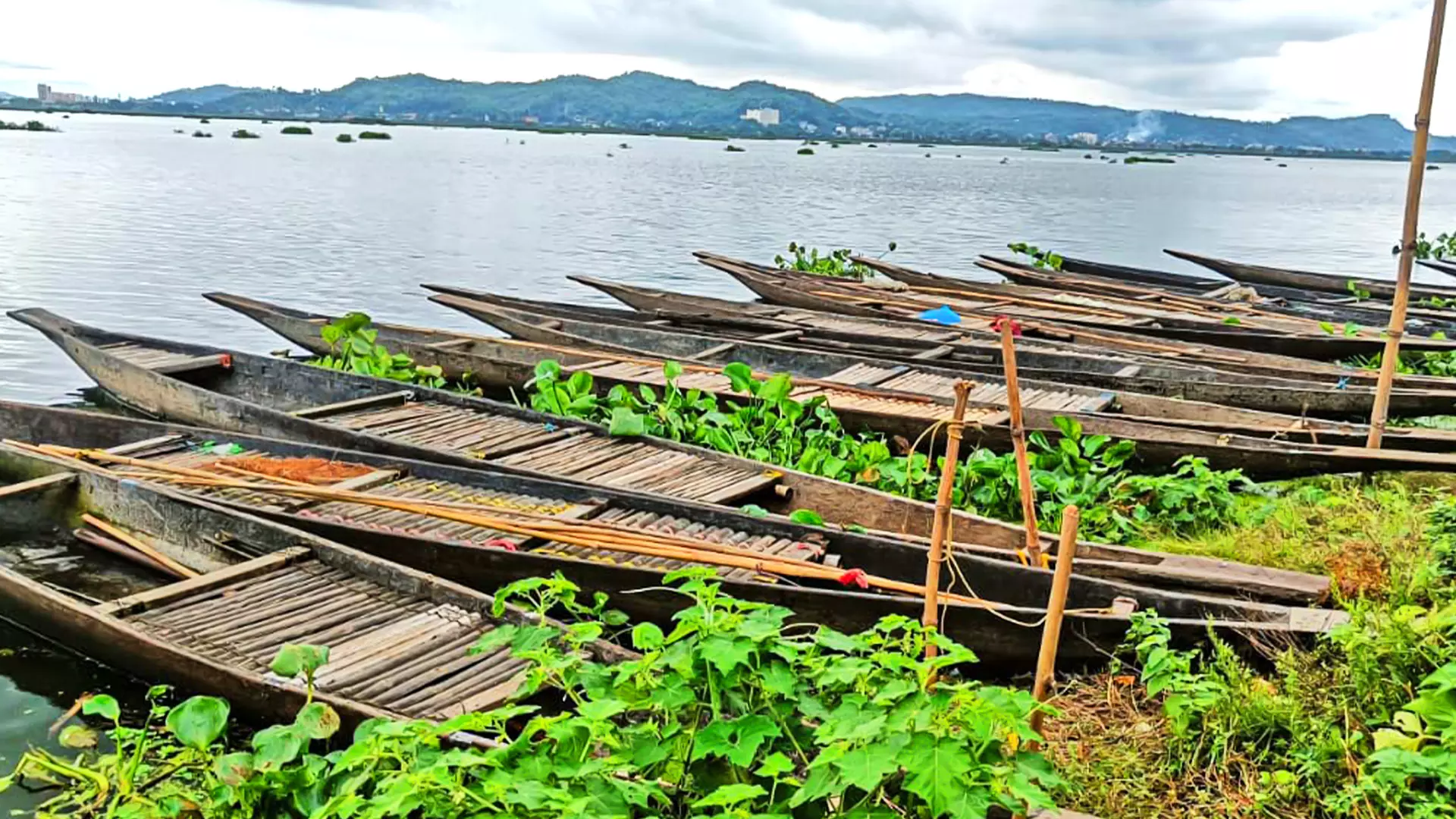
The tranquil Deepor Beel, the perennial freshwater lake 10km southwest of Assam’s Guwahati. Photos: Maitreyee Boruah
Every day, they start around 3 am to fish from the lake and sell their catch in nearby marketplaces to earn their livelihood. As the beel, the only wetland in Assam designated as a site of importance for “conservation and sustainable use” under the Ramsar Convention on Wetlands in 2002, is facing ecological challenges, often the fishing community comes under attack.
Where will the guardians of Deepor Beel go?
It is usually alleged the fisherfolk are indulging in unabated fishing to earn lucrative profits and thus harming the wetland further.
The government has banned fishing in the core area of the lake. Moreover, government authorities regularly issue ban orders on community fishing, especially during January when Magh Bihu (the most important traditional festival of Assam) is celebrated. This January, the order from the government read that such venture (community fishing) is illegal under the Wildlife (Protection) Act, 1972 as it causes irreparable and irretrievable damage to the ecosystem of Deepor Beel, which is also a wildlife sanctuary.
Over the years, hundreds of people from the indigenous Keot community of Assam engaged in fishing have been forced to migrate from Deepor Beel in search of newer livelihood opportunities. Locals of the area strongly oppose the attack on fishermen. Fishing has been an important social, economic and cultural fabric of the people living near Deepor Beel for generations.
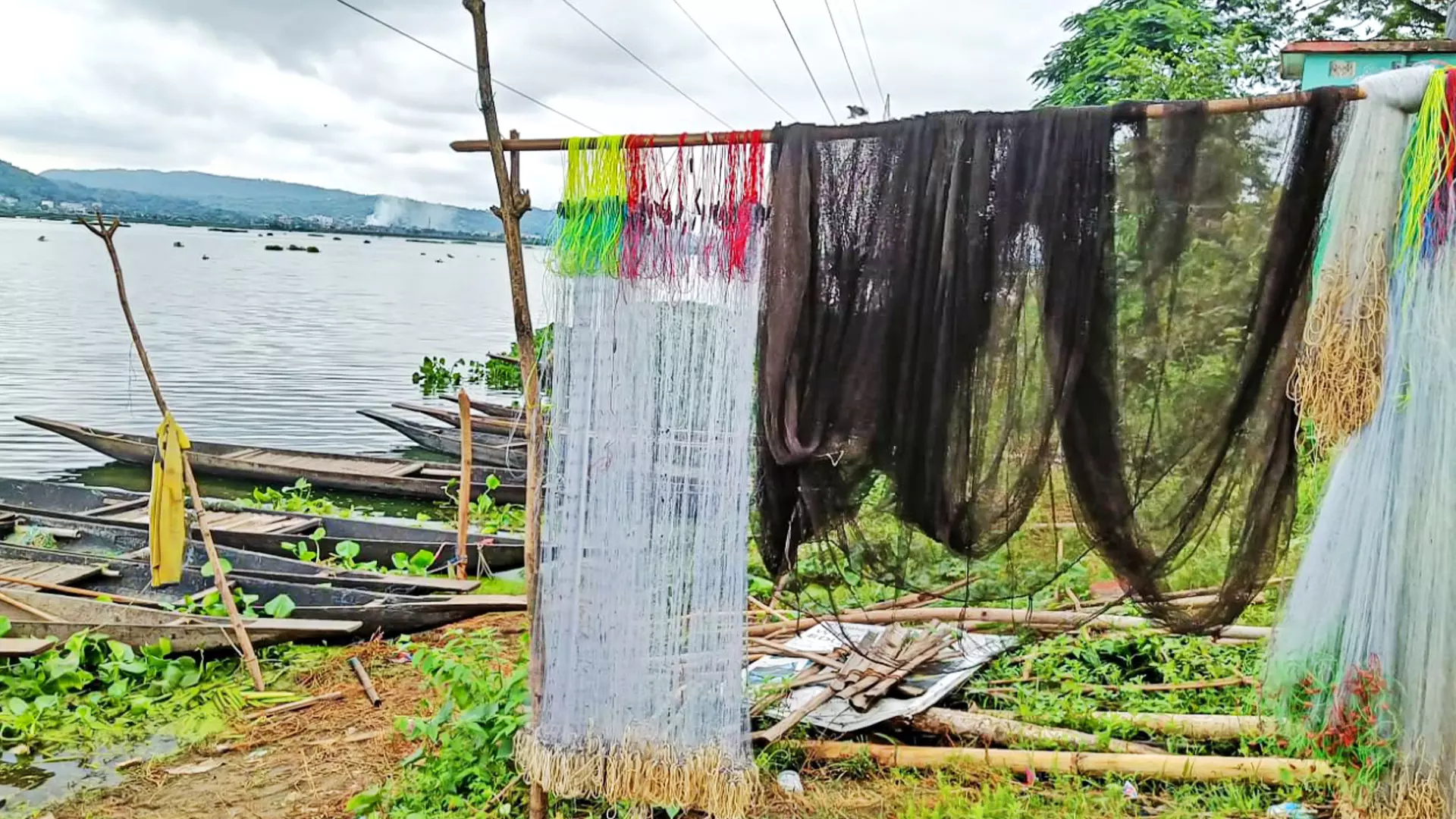
The handmade fishing nets of Deepor Beel's fisherfolk.
Apart from fishing, the locals largely depend on the beel for edible herbs and other comestibles, herbal medicines, fodder, grazing and wood for fuel. Locals opine that fishermen are the ones who are "the last few fiercely guarding and protecting Deepor Beel from a total ecological disaster".
Pramod Kalita, 38, an environmental activist and a local of Deepor Beel, said fishermen were the "real custodians of Deepor Beel". “For generations, the fishing community has been engaged in sustainable fishing. They are not the plunderers as some allege them to be. The famed lake would have been lost long ago if the fishing community had not been looking after it.
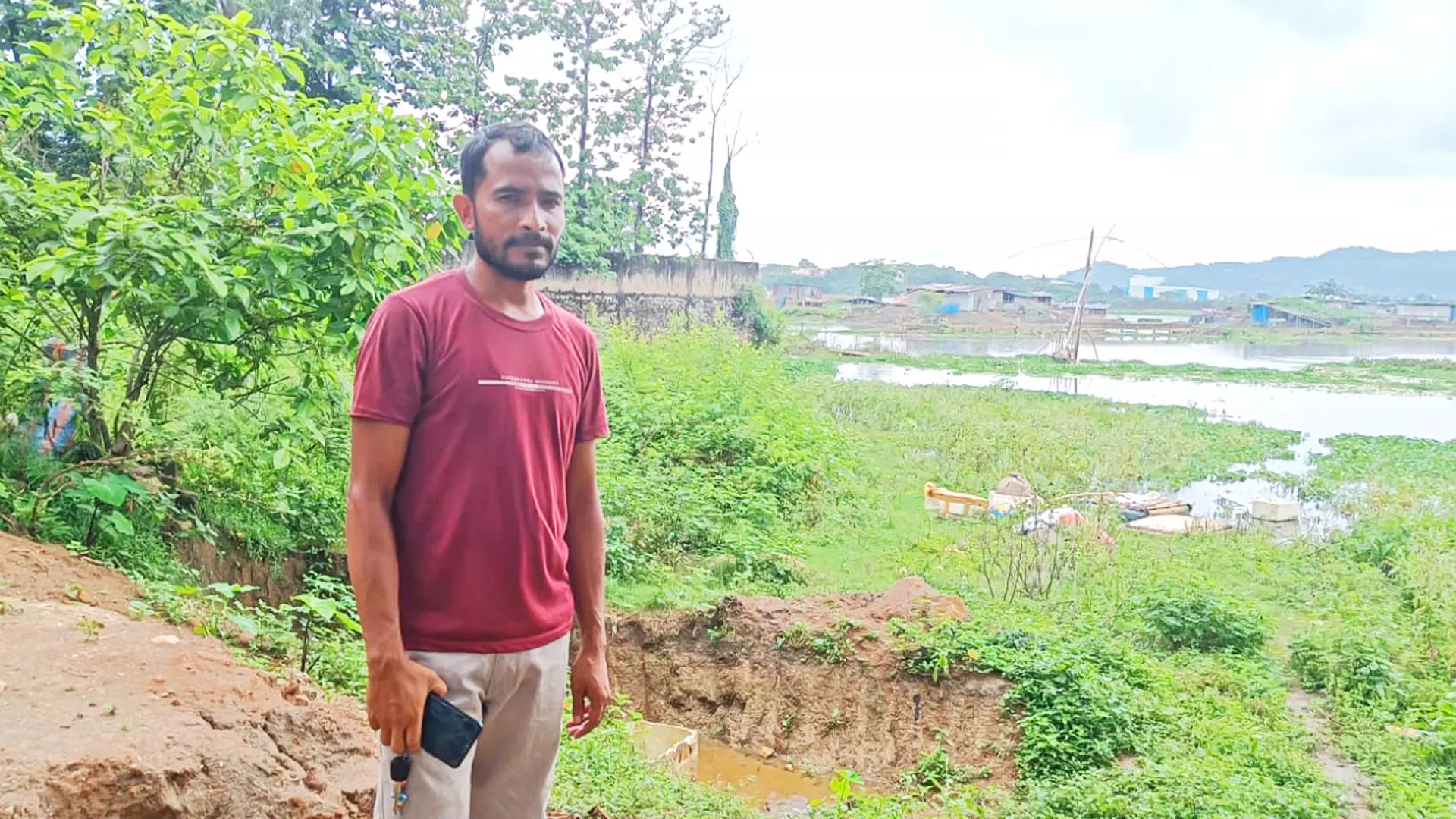
Pramod Kalita, 38, an environmental activist and a local of Deepor Beel, is fighting hard to save the lake from dying.
"These fishermen are the ones who are always the first to report on any poaching activities in and around the wetland and the nearby forest areas. Because of their traditional knowledge which is sustainable and scientifically backed, they fish depending on breeding seasons," added Kalita.
In the winter, small-sized fish are caught and the big fish are caught during the summer along with small ones. As the water level rises during the monsoon, fishing is comparatively reduced in and around the beel.
A treasure trove
According to various studies, at least eight endangered fish species were found in the wetland. Those were Cirrhinus reba, Ompok bimaculatus, Ompok pabda, Botia derio, Nandus nandus, Rasbora alenga, Bracidanio rario and Channa barca. Again, 20 economically important large fish species were found in the beel. They were Labeo rohita, Catla catla, Labeo calbasu, Channa marulius, Channa striatus, Notopterus chitala, Notopterus notopterus, Cirrhinus mrigala and Wallago attu, among others.
It was in 2014 that Kalita along with several residents of Deepor Beel formed Deepor Beel Suraksha Manch (Save Deepor Beel Committee), an organisation to protect the wetland from its impending crisis.
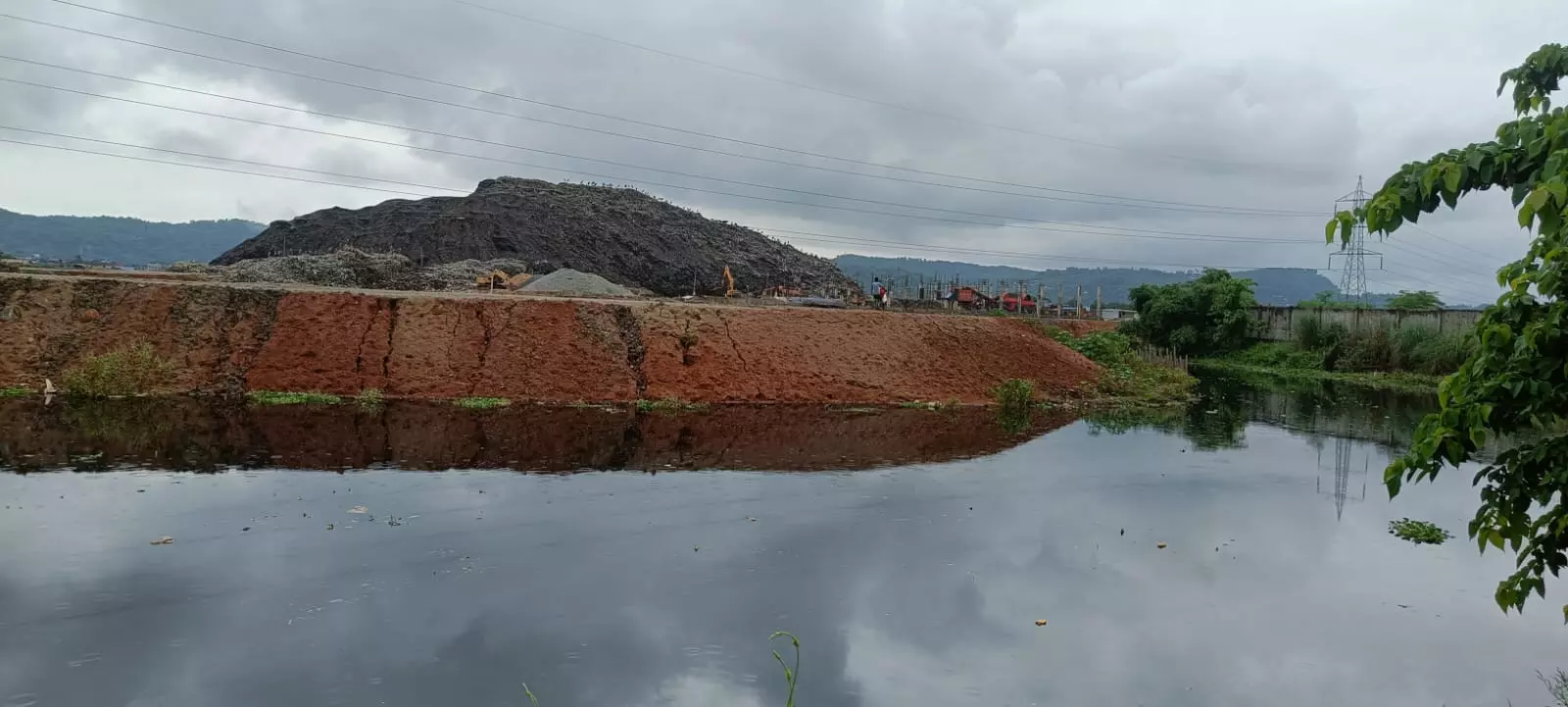
The "garbage mountain" overlooking the lake fighting hard to survive.
The Ramsar site is known for its fish and bird diversity and rich aquatic vegetation. The wetland has an estimated 200 species of birds, including around 70 migratory bird species. Over the years, fish species have reduced from 60 to 30 in the lake. It also attracts wild elephants from the nearby forests.
What is killing the beel?
The wetland is facing extensive conservation threats. Some of the reasons behind it are garbage dumping, quarrying, release of sewage from Guwahati, construction of a railway line and a smart city project. Heavy siltation from the deforested hills around the lake and invasion of aquatic weeds such as water hyacinth, or Eichhornia are also causes of concern.
"It is not us (the fisherfolk) but the garbage dumping ground (close to the Deepor Beel) and all the sewage waste from Guwahati that land in the wetland is killing the wetland. If fishing had threatened Deepor Beel, it would have died long ago. My family has been fishing in the lake since the time of my great-grandfather.
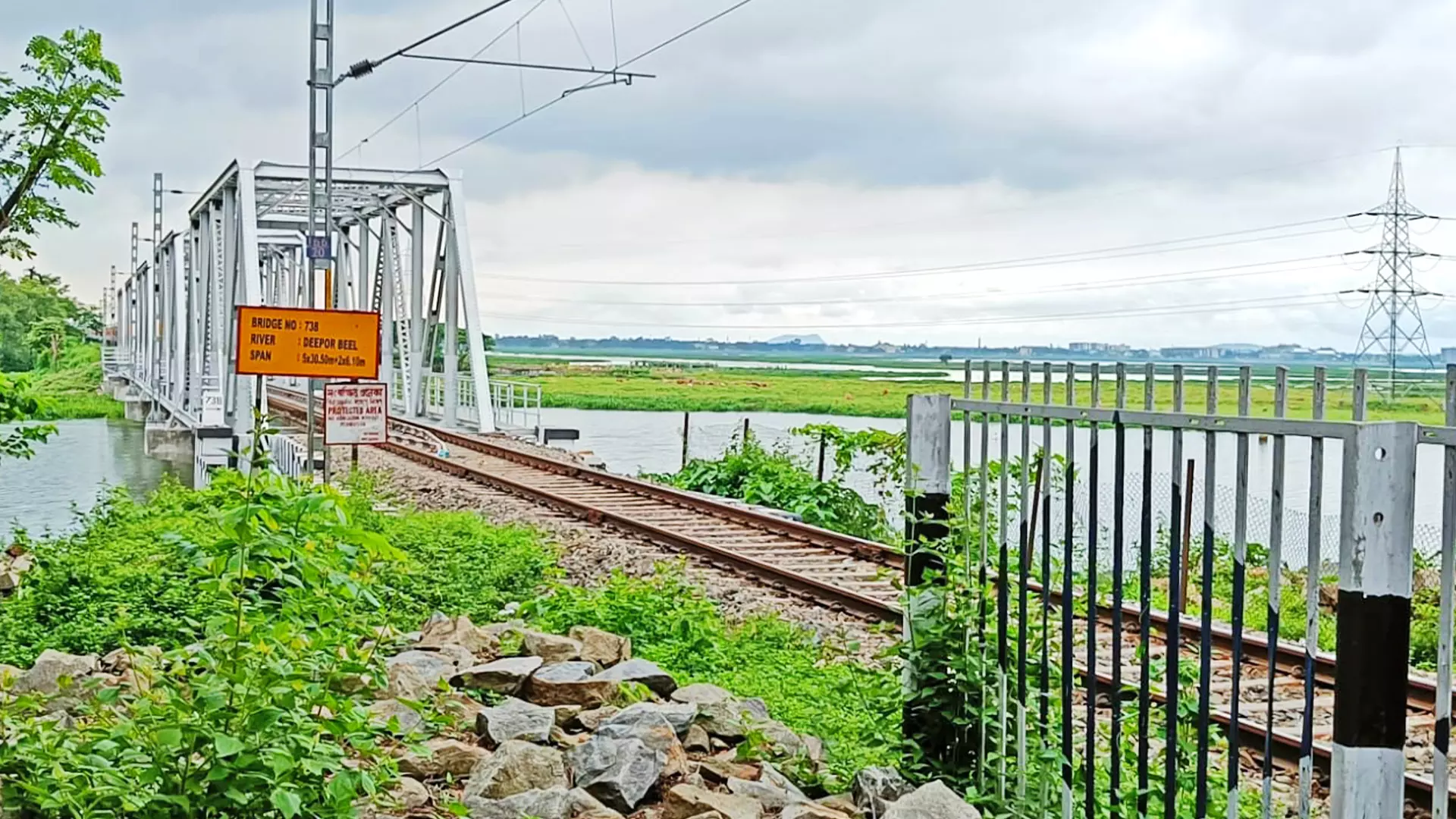
The railway line passing through Deepor Beel has caused great environmental damage to the wildlife sanctuary.
"It is the pollution and land encroachment by the real estate lobby that is causing the biggest harm," said Das, who has been fishing for the last 10 years. Earlier, Das was working as a government employee on a contractual basis. After he took voluntary retirement, he decided to follow his ancestors' and siblings' footsteps.
A dark future for Deepor Beel?
Sanatan Das (31) and Nakul Das (30), two friends and fishermen, said the lake water was crystal clear and clean when they were children. "Now, it had turned murky and dirty. In our childhood, we used to drink the water from the beel. Now, we don't even dare to take a bath for fear of developing skin rashes," said Nakul, as he was busy making a sepa (fishing equipment).

Sanatan Das (31), a fisherman, is busy making a sepa (fishing equipment).
Sepa, usually oblong, is made of bamboo, cane, vines and jute strings. It is designed to be a trap with valves through which fish can enter the cage but cannot come out.
Sanatan added they still use as many as traditional equipment —18 of them — for fishing. "We make the equipment using readily available natural materials like bamboo, cane and vines. We even make fishing nets instead of buying them from the market. If this is not sustainable, then what is?" asked Nakul.
Some of the traditional fishing equipment are Tongi Jal (fishing net), Sewaki Jal (fishing net), Jakoi (wickerwork shovel) and Polo (dome-shaped equipment with a circular base), to name a few.
A usual day for a fisherman starts at 3 am and extends till 6 pm. During that time, he sails a boat, casts his net in the wetland, catches fish, makes or repairs fishing equipment and sells his catch. Fishermen sell their catch as per aska. One aska is equal to four to five kgs. Each aska is priced at Rs 400 to Rs 500 depending on the variety of fish. Thus, each fisherman earns around Rs 400 a day.
How is pollution choking Deepor Beel?
From where Sanatan and Nakul were working under a makeshift roof, a huge mountain was visible. It was built by dumping garbage. In 2006, the Guwahati Municipal Corporation, or GMC, started dumping tonnes of untreated garbage in Boragaon, one of the 14 villages, near the wetland.
For a few months in 2021, the local civic body stopped throwing waste near the wetland because of an order by the National Green Tribunal. However, the GMC restarted dumping garbage near the Deepor Beel around 800 metres from its previous place in Boragaon.
It is estimated that around 600 tonnes of waste are generated per day from Guwahati. All of it is dumped in Deepor Beel. In 2022, the new dumping yard in Boragaon caught fire which remained active for a week. Moreover, since 1987, all the untreated sewage water from Guwahati has been sent to Deepor Beel.
“The smoke from the fire in 2022 caused great discomfort to the local population. We fear for our children's future. We can't open our doors and windows when it is windy as the foul smell from the dumping yard spreads across the whole area. It becomes difficult for us to breathe," said Pramila Teron, a resident.

Pramila Teron, a resident, complains that air pollution in the Deepor Beel is choking their children.
Due to various “illegal activities”, Deepor Beel has shrunk by around 35 per cent since 1991. It is now spread across 4,014 hectares.
Deepor Beel is the only major stormwater storage basin and acts as the natural stormwater reservoir for Guwahati through the Mora Bharalu rivulet. However, as the beel has shrunk, the flooding condition in Guwahati has worsened. In the first week of July, Guwahati witnessed floodwater entering residential buildings in almost all its localities. It took more than two days for flood waters to recede.
